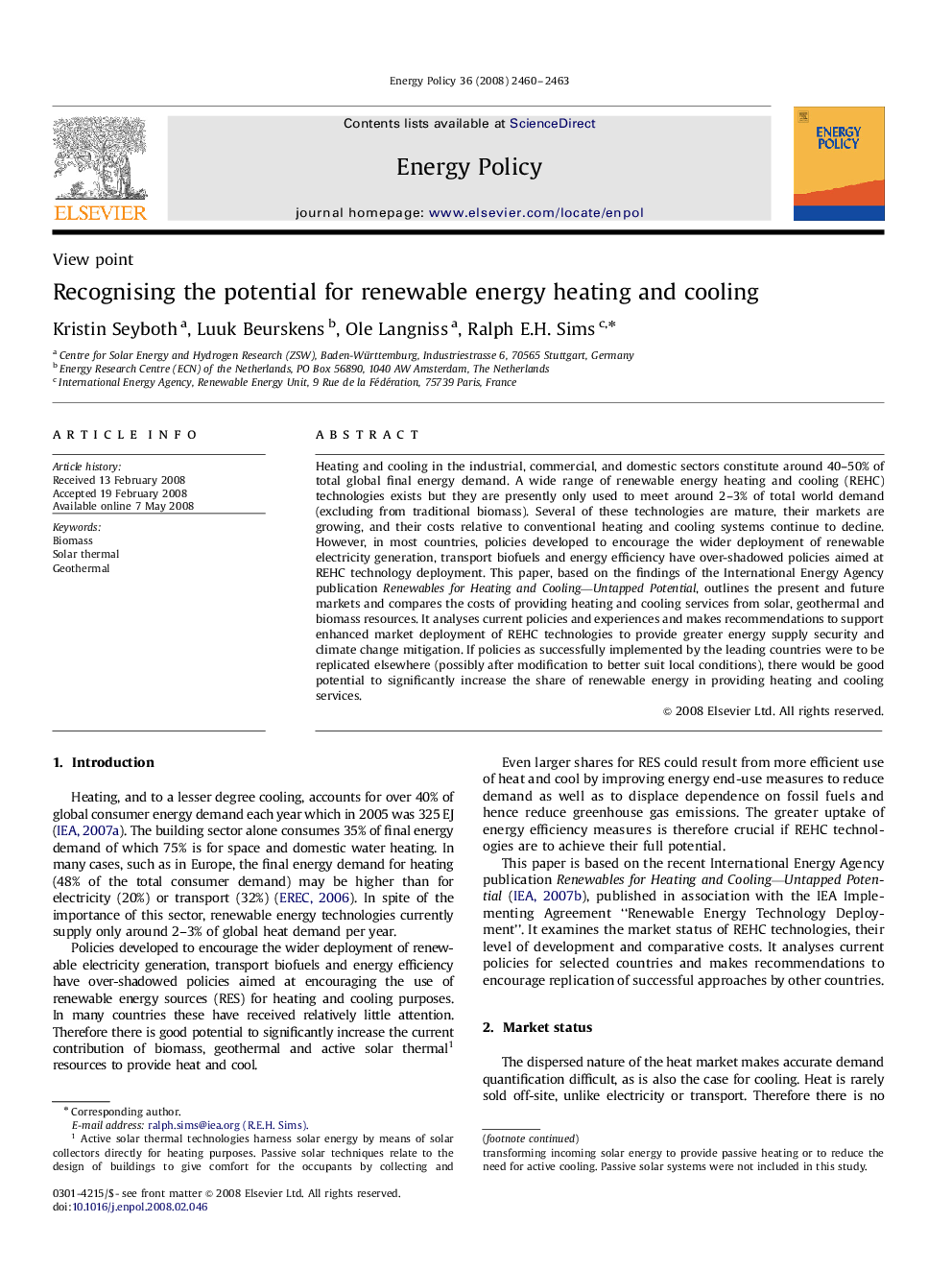| Article ID | Journal | Published Year | Pages | File Type |
|---|---|---|---|---|
| 997135 | Energy Policy | 2008 | 4 Pages |
Heating and cooling in the industrial, commercial, and domestic sectors constitute around 40–50% of total global final energy demand. A wide range of renewable energy heating and cooling (REHC) technologies exists but they are presently only used to meet around 2–3% of total world demand (excluding from traditional biomass). Several of these technologies are mature, their markets are growing, and their costs relative to conventional heating and cooling systems continue to decline. However, in most countries, policies developed to encourage the wider deployment of renewable electricity generation, transport biofuels and energy efficiency have over-shadowed policies aimed at REHC technology deployment. This paper, based on the findings of the International Energy Agency publication Renewables for Heating and Cooling—Untapped Potential, outlines the present and future markets and compares the costs of providing heating and cooling services from solar, geothermal and biomass resources. It analyses current policies and experiences and makes recommendations to support enhanced market deployment of REHC technologies to provide greater energy supply security and climate change mitigation. If policies as successfully implemented by the leading countries were to be replicated elsewhere (possibly after modification to better suit local conditions), there would be good potential to significantly increase the share of renewable energy in providing heating and cooling services.
